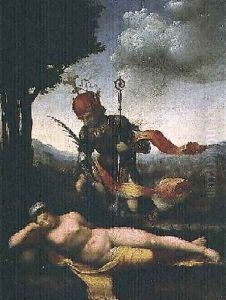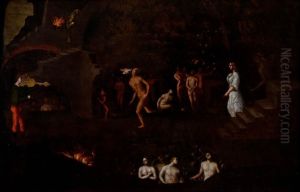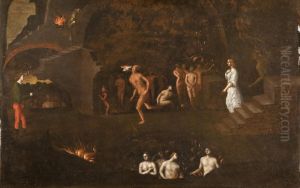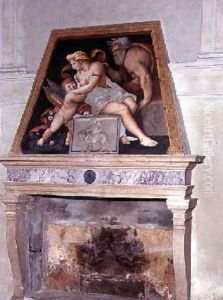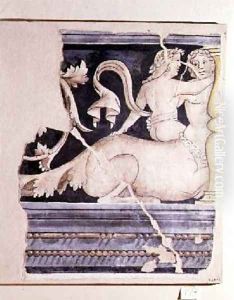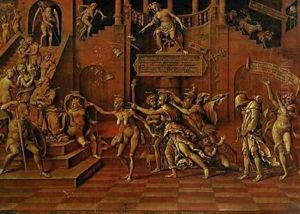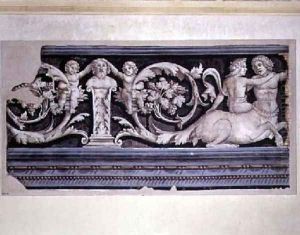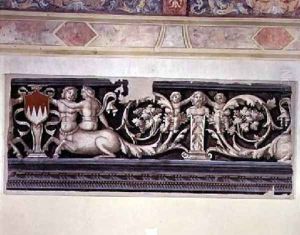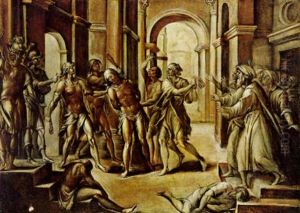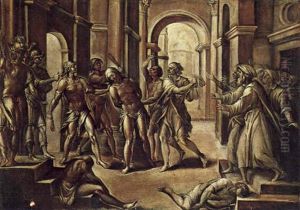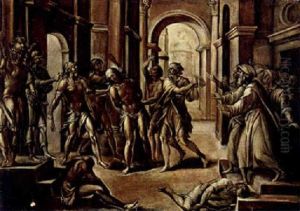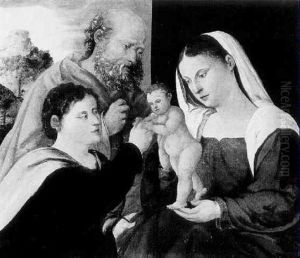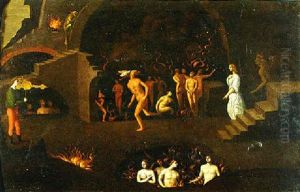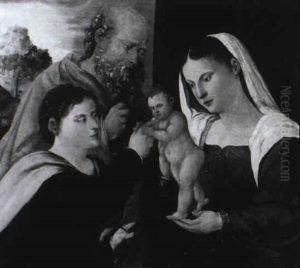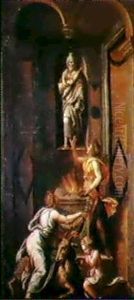Lorenzo Leonbruno Paintings
Lorenzo Leonbruno, also known as Lorenzo de Leombeni, was an Italian painter and architect of the Renaissance period, active primarily in his hometown of Mantua, in Lombardy. His exact birth and death dates are not well documented, but he is believed to have been born around 1489 and to have died around 1537.
Leonbruno is considered part of the Mantuan school of painting, which flourished under the patronage of the Gonzaga family, the rulers of Mantua. He was a pupil of Lorenzo Costa, the elder, who was court painter to the Gonzagas, and Leonbruno's early work reflects Costa's influence, particularly in the use of color and composition. However, Leonbruno is also thought to have been influenced by the work of other artists such as Andrea Mantegna and Giulio Romano, who were also active in Mantua during this period.
Leonbruno's work is characterized by its vivid color palette and the incorporation of classical themes and allegories, which were popular among Renaissance patrons. He was skilled in fresco painting, a technique that involves applying water-based pigments to freshly laid plaster. One of his most notable works is the fresco series depicting the Labors of Hercules in the Palazzo d'Arco in Mantua, which showcases his ability to blend mythological subjects with a dynamic and expressive style.
Despite his talents, Leonbruno did not achieve the same level of fame as some of his contemporaries, and much of his work was overshadowed by that of other prominent artists of the time. Unfortunately, many of his paintings and frescoes have been lost or damaged over the centuries, which has made it challenging for art historians to fully assess his contribution to the Renaissance art movement.
In addition to painting, Leonbruno also showed an interest in the scientific and technological advances of his time. He is known to have designed machines and theatrical sets, indicating a versatile mind that was in tune with the intellectual climate of the Italian Renaissance.
Leonbruno's legacy is that of a talented but somewhat underappreciated artist of the Renaissance whose works offer a glimpse into the rich cultural and artistic environment of 16th-century Mantua. Although not as well-known as some of his peers, his contributions to the art of fresco painting and the Mantuan school remain significant.
